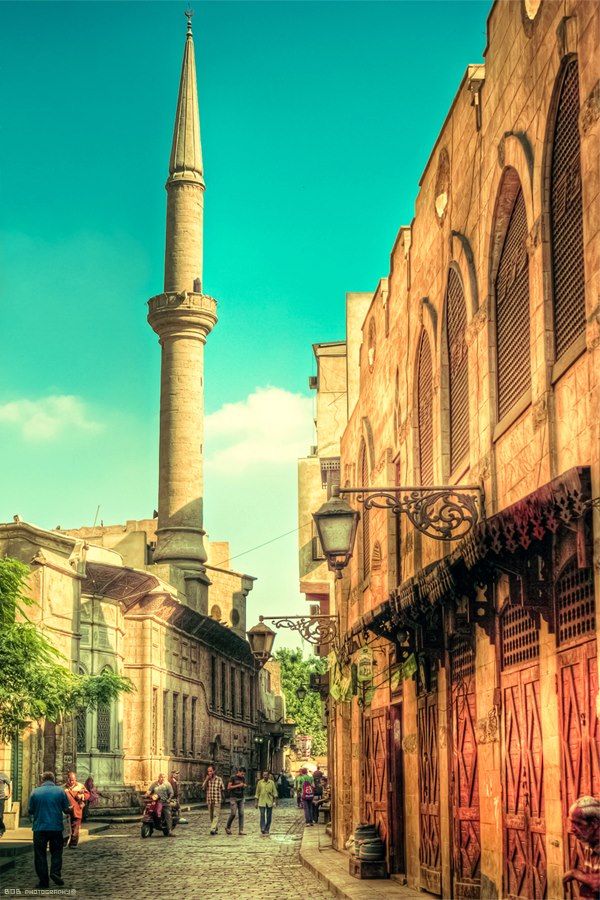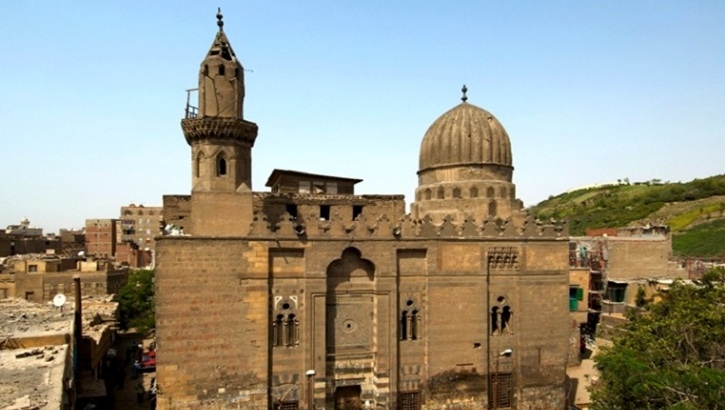Sulayman Agha al-Silahdar Mosque: A Hidden Ottoman Jewel in Cairo
Cairo’s skyline is famously dotted with towering minarets and timeworn domes. Amid the grand mosques and crowded souqs lies a lesser-known yet exquisite gem: the Sulayman Agha al-Silahdar Mosque. Tucked away on the famed Al-Muizz Street—Cairo’s historic Islamic spine—this mosque is a true Ottoman-era masterpiece that blends delicate architecture, spiritual tranquility, and deep historical roots.
If you’re exploring Cairo and looking to step beyond the mainstream sites, this elegant mosque is a must-visit.

Who Was Sulayman Agha al-Silahdar?
To understand the soul of this mosque, it's essential to know the man behind it. Sulayman Agha al-Silahdar was an influential Ottoman official in Egypt during the early 19th century. His title, Silahdar, means “sword-bearer” or a member of the elite military corps—a prestigious role within the Ottoman military and court hierarchy.
A devout and cultured man, Sulayman Agha commissioned this mosque in 1839, not just as a place of worship, but as a personal contribution to the architectural legacy of Islamic Cairo.
Architecture That Whispers Grace
When you approach the Sulayman Agha al-Silahdar Mosque, the first thing you’ll notice is its distinctively Ottoman style, which immediately sets it apart from the heavier, more austere Mamluk buildings nearby.
Key architectural highlights include:
-
A pencil-thin minaret, reminiscent of Turkish mosques, with elegant balconies and a graceful finial.
-
Fine use of stone and marble, giving it a light, airy aesthetic that reflects both refinement and function.
-
Arched entrances and domed ceilings, allowing sunlight to stream in, bathing the prayer hall in a soft glow.
-
Calligraphy panels and intricate geometric patterns, carved delicately into the walls, doors, and mihrab.
It’s not a massive structure—far from it. But the mosque’s charm lies in its balance of proportions and its seamless blending of art and function.
A Peaceful Escape from Cairo’s Chaos
One of the most beautiful aspects of visiting Sulayman Agha al-Silahdar Mosque is the peace it offers. Cairo can be loud and frenetic, but stepping inside this mosque feels like entering a different world. It’s quiet. Serene. Reflective.
You may find a few locals praying, others sitting in contemplation, or a tourist gently exploring the interior. Everyone moves slowly here, almost reverently, as if the building itself demands respect.
The Mosque’s Cultural and Historical Significance
While not as famous as Al-Azhar or Ibn Tulun Mosque, this site plays an important role in preserving Ottoman influence in Egypt’s architectural evolution. It represents:
-
A transitional era, bridging the classic Islamic architecture of earlier dynasties and the refined Ottoman style.
-
A testament to the personal piety of elite Ottoman officials who invested in urban beautification and religious institutions.
-
A rare example of 19th-century Ottoman architecture that has survived largely intact in a city known for its constant change.
This mosque contributes to the narrative of Cairo as a layered city, where every building tells a different story—from the Pharaonic to the Fatimid to the Ottoman.
Exploring Al-Muizz Street Alongside the Mosque
Located on Al-Muizz Street, a visit to Sulayman Agha al-Silahdar Mosque fits seamlessly into any historical walking tour. This street is an open-air museum of Islamic architecture, with medieval houses, fountains, palaces, and mosques on every corner.
After visiting the mosque, you can:
-
Shop for local crafts at nearby Khan El Khalili market
-
Stop for tea or coffee at historic cafés
-
Visit nearby landmarks like Al-Hakim Mosque or the Mosque of Sultan Al-Muayyad
Tips for Visiting
-
Opening hours: Typically open from early morning until sunset.
-
Dress modestly: As with any place of worship in Egypt, modest clothing is required (shoulders and knees covered).
-
Entry is free, but small donations are appreciated to support upkeep.
-
Photography is allowed, but be respectful of worshippers.
-
Best time to visit: Early morning or late afternoon for softer light and quieter ambiance.
Why You Shouldn’t Miss It
With so many iconic mosques in Cairo, you might wonder why you should make time for this one. Here’s why:
-
It offers a less crowded, more intimate experience than the bigger mosques.
-
It showcases Ottoman elegance in a city dominated by Mamluk and Fatimid design.
-
It invites you to reflect and connect—not just with the history, but with the present spiritual life of Cairo.
Final Thoughts: A Hidden Gem Worth Your Time
The Sulayman Agha al-Silahdar Mosque is a reminder that beauty in Cairo isn’t always loud or grandiose. Sometimes, it’s quiet, understated, and tucked between bustling alleyways. Whether you’re a history buff, an architecture lover, or just a curious traveler, this little mosque offers a rich and rewarding experience.
It’s these hidden gems that make a Cairo journey unforgettable—so don’t just pass by. Step in. Breathe it in. Let Cairo’s soul speak to you through stone and silence.

